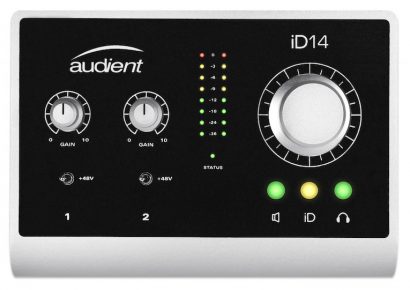TWO UNITS IN ONE
There’s a couple of ways of looking at this device and it is hard to see it one-way when your mind is focussed on the other. What struck me when I first took it from the packaging is that it reminded me of two older devices I used to have, but simply joined together, and with a few more features. That’s how I took it and that’s what I saw first up. So, what came to my mind was a bank of faders that could be used for any application, but most likely to replace the faders in your software mixer. I then saw a bank of 24 pots that could be assigned to do whatever you wished. Like two separate units, I instantly came up with a number of ways of working with them as a combined controller with certain software applications.
But then it dawned on me, as I noticed the last fader was designated as a master (and had no pots above it), the layout was actually meant to be used in a different manner to how I had perceived it. Rather than a fader controller and a rotary controller joined together, this is really a mixer device, one complete unit. Three pots sit above each of the faders with Mute and Record Arm button between each. What I have here is a mixing controller that suggested a different way of working in my head.
QUICK AND SIMPLE
No matter how you perceive this device and how you choose to integrate it with your software, it is an easy process. Powered by USB and with a quick install, you can easily Automap it to a range of software, although I always prefer to map out my controllers to suit my specific needs, this still didn’t take long. Once up and running, the MIDIMIX gave me excellent control options over the software. I didn’t gel with the pots that well as their tapered design and smooth finish makes it tough to get decent, continuous control, but other than that, there isn’t much to complain about. It’s lightweight, compact and offers plenty of control for the space it requires.


